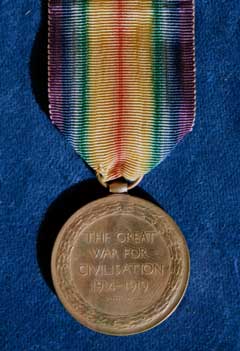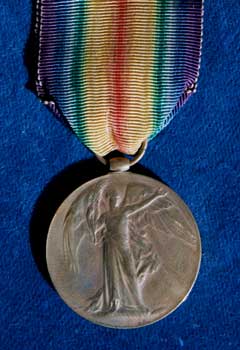 |
King's Own Royal Regiment Museum Lancaster |
|
|
HOME Museum & Collections Sales Donations Events Contact Us REGIMENTAL HISTORY 17th Century 18th Century 19th Century 20th Century First World War Second World War Actions & Movements Battle Honours FAMILY HISTORY Resources Further Reading PHOTO GALLERY ENQUIRIES FURTHER READING LINKS |
MEDAL INFORMATION Allied Victory Medal 1914-1919 Face
Reverse
Size
Composition
Ribbon
Suspension
Naming
Bars
Awarded Most of the Allied Governments awarded the medal in the same way to their servicemen and supporting auxiliaries. Their medals were generally of the same basic pattern, excepting Japan who replaced the figure of Victory with a warrior bearing a spear. In all cases, however, the medal ribbon was a pattern of the colours of the rainbow.
The King’s Own R. LANC. R. being the shortened version of the Regimental title at that time. Probably around 40,000 Allied Victory Medals were issued bearing the R. LANC. R. title, and around 4,000 were issued to officers of the Regiment, these of course not bearing the Regimental Title. Allied Victory Medals in the museum's collection
Allied Victory Medal Medals noted in records with the reference as King's Regulations for the Army (1912) Paragraph 1743 - are those medals which at the end of ten years still remain unclaimed and sent to the Deputy Director of Ordnance Stores, Royal Dockyard (Medal Branch) Woolwich to be broken up. |


